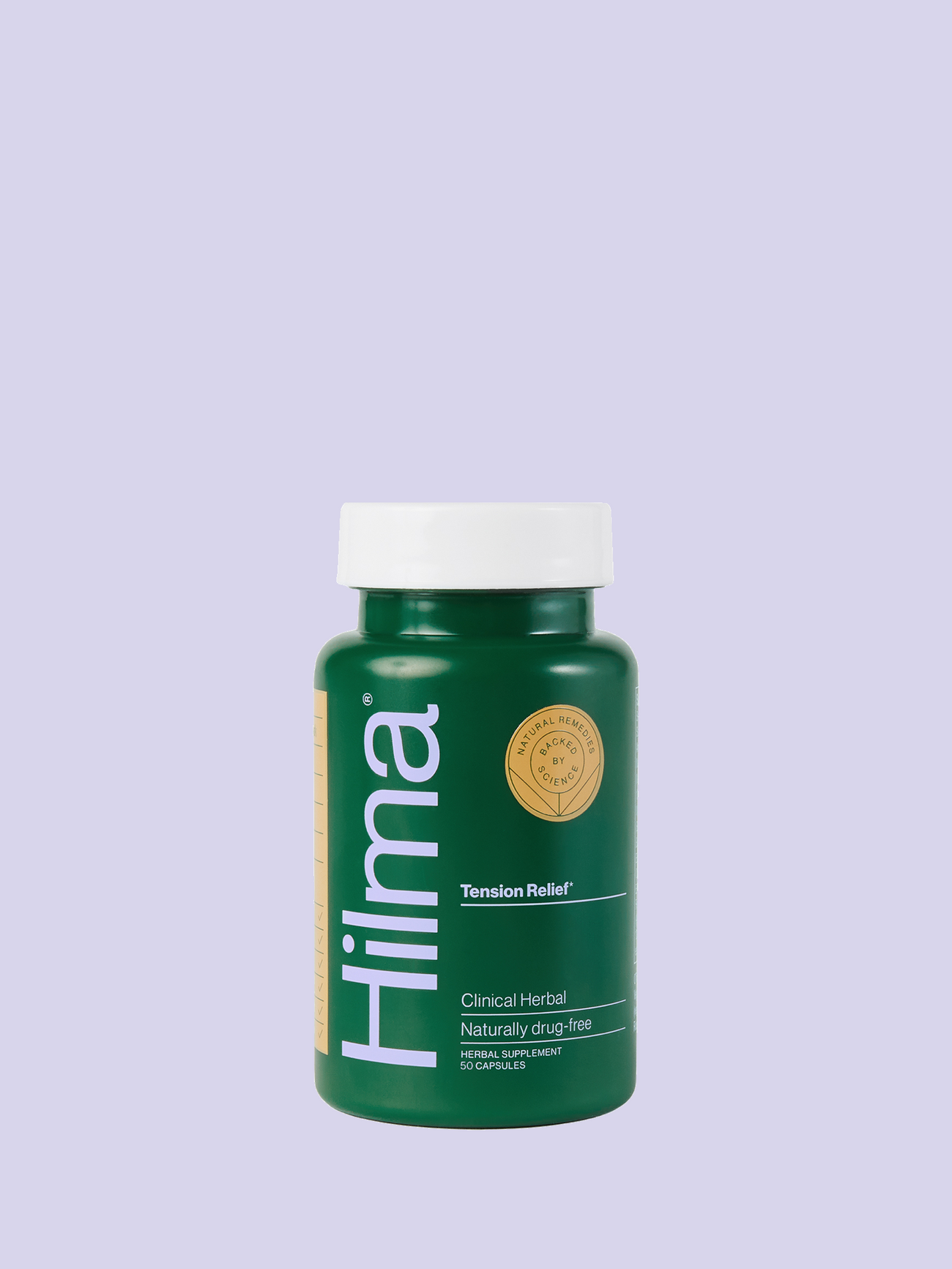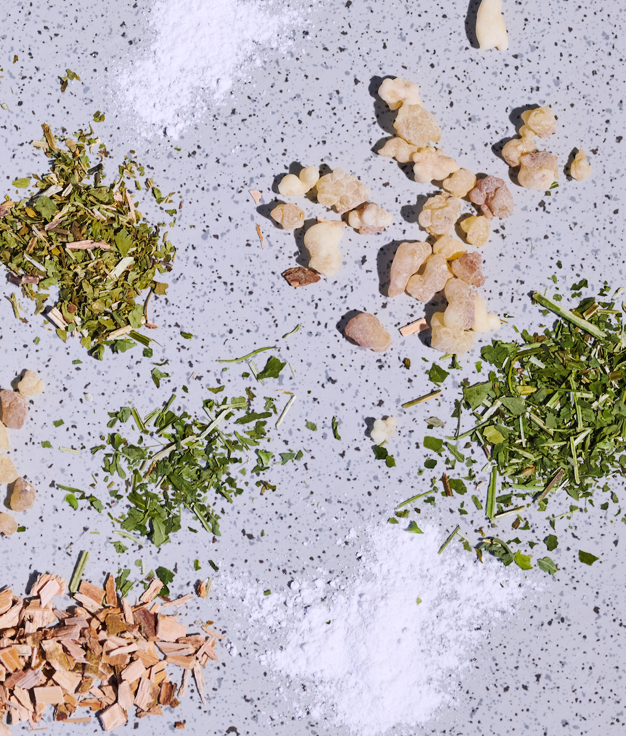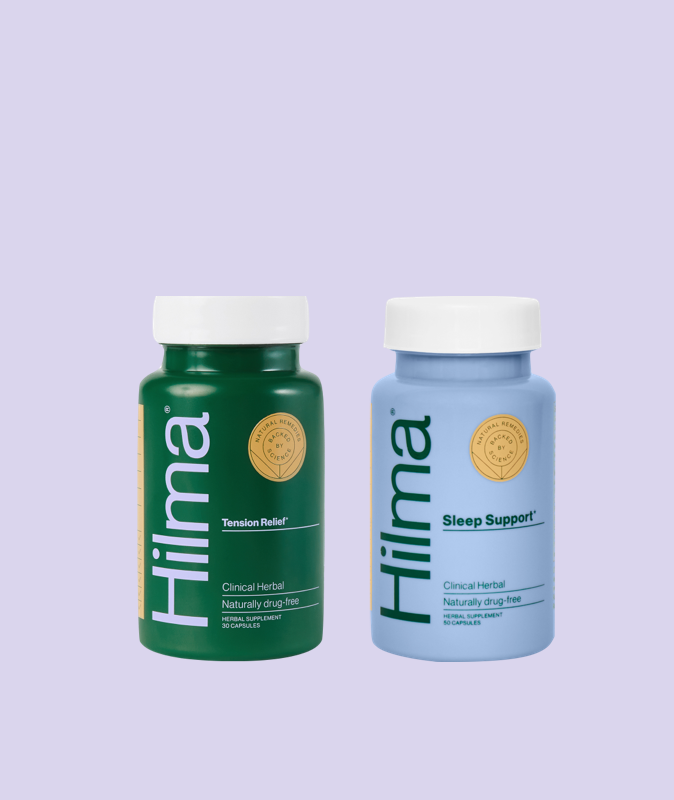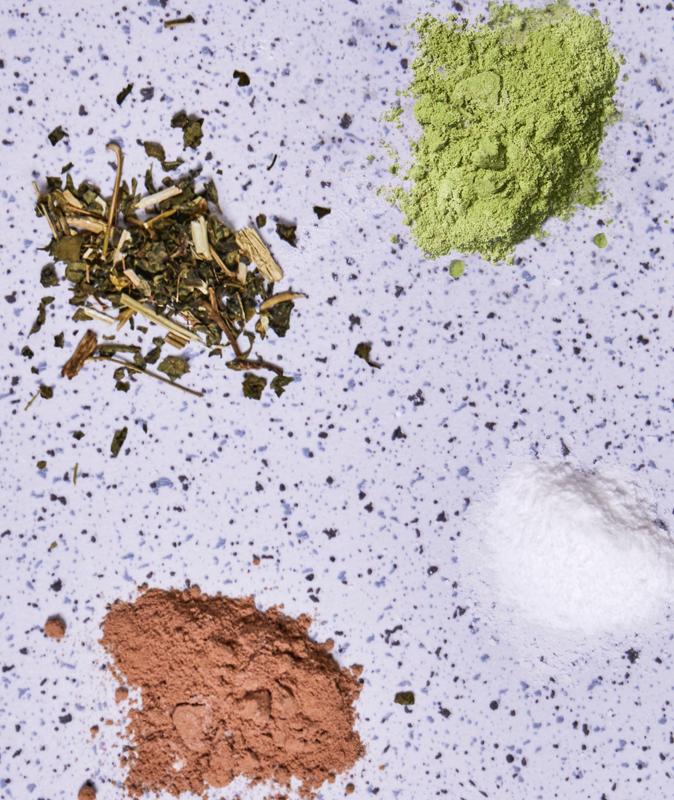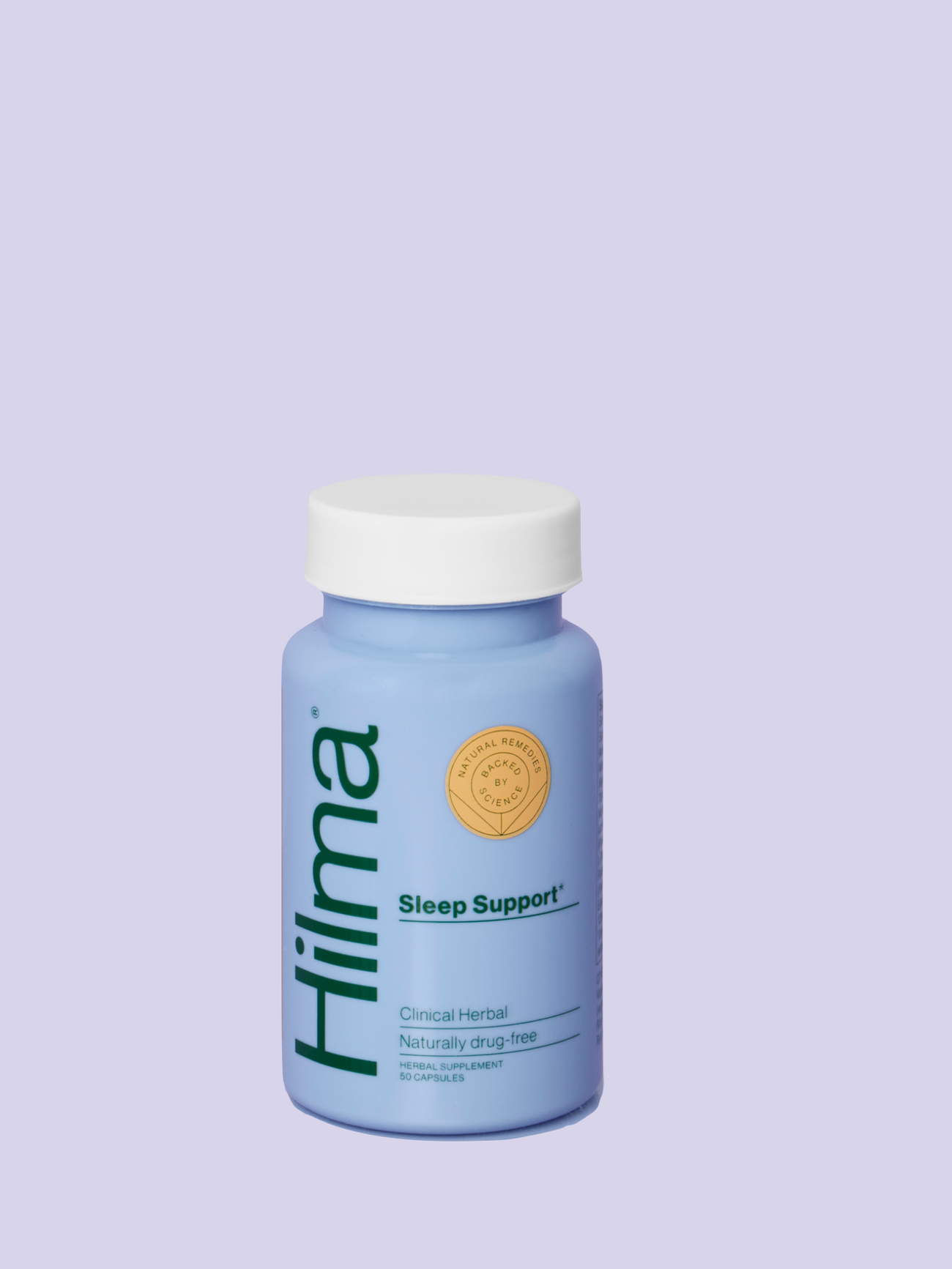
If you've ever felt the relentless squeeze of a tension headache, you know how it can overshadow even the best days. At Hilma, we're passionate about finding natural, effective approaches to common health challenges, and acupressure is a standout. This ancient practice offers a touch-based remedy to help release the tight grip of headache pain.
Interested in discovering more? We’ve got you covered. Read on as we unpack what tension headaches really are and discover how acupressure can help manage them, turning a painful day into a more peaceful one.
What Is a Tension Headache?
Imagine your head caught in a gentle but persistent grip. That's the hallmark of a tension headache.
This type of headache often manifests as a steady ache that can grip the forehead, temples, or the back of the head. Typically linked to stress, muscle strain, or anxiety, tension headaches aren’t just annoying — they can significantly impact your day.
Tension Headaches vs. Other Headaches
When we talk about headaches, it's not a one-size-fits-all scenario. Migraines, for instance, can hit like a wave of severe, throbbing pain, often one-sided and accompanied by other symptoms like sensitivity to light or sound.
Then there are cluster headaches, which are less common but brutally intense, often described as having a burning or piercing quality behind one eye. Tension headaches, on the other hand, are more like a background noise — a consistent, dull ache that persists but doesn’t usually stop you in your tracks.
What Is a Pressure Point?
Jumping into the world of acupressure, a pressure point is essentially a sweet spot on your body, used to alleviate pain or stress. These points are hubs where muscle tension, nerve bundles, and blood vessels intersect.
Applying gentle pressure to these points can stimulate the body’s natural healing mechanisms, encouraging relaxation and pain relief.
How Are Pressure Points Named?
Now that you know what pressure points are, you might wonder how they get their seemingly cryptic names. Each pressure point is labeled with a blend of letters and numbers, such as LI-4 or GB-20, where the letters signify the meridian it affects — like "LI" for Large Intestine. The numbers indicate the point's specific location along this pathway.
Beyond these clinical tags, many points have descriptive names rooted in their traditional use in traditional Chinese medicine, providing insights into their benefits and applications. These names often reflect the function or the healing potential of the point, connecting its physical location to its therapeutic impact.
How Can Acupressure Points Relieve Tension Headaches?
It's fascinating how a simple touch on specific areas can significantly dial down the discomfort of tension headaches. Acupressure points, when pressed, help relax tight muscles and boost blood flow in areas that contribute to headaches. This not only eases the pain but also helps your body steer back to a more relaxed state.
Engaging these points encourages the release of endorphins — your body's natural pain relievers. So, by tapping into acupressure, you're not just easing the headache but also inviting a wave of relaxation that supports a healthier, more balanced state of being.
What Are the Best Pressure Points for Tension Headaches?
When tension headaches strike, it’s great to have a few natural tricks up your sleeve. Acupressure offers a hands-on way to relieve headaches by pressing specific points on your body.
Let’s explore the top 10 acupressure points that are particularly effective for easing tension headache pain:
1. LI-4
This point is found in the back of the hand in the web space between the thumb and index finger. Applying firm pressure here can quickly alleviate headache pain and also address symptoms of stress and neck pain. It’s particularly effective for headaches that manifest as a persistent, dull ache.
2. GB-20 (Gates of Consciousness)
Nestled at the base of the skull, where the neck muscles meet the skull, GB-20 helps release accumulated tension and stiffness. Pressing these points can effectively diminish the intensity of headaches, especially those stemming from neck and upper back pain.
3. Taiyang (Temples)
Located on the temples, these points are ideal for headaches that result from eye strain or prolonged screen time. Gentle circular motions here not only ease the headache but can also help alleviate sinus pressure and symptoms related to migraine attacks.
4. BL-10 (Tian Zhu)
You’ll find this point near the top of the neck, on either side of the spine. It’s effective for soothing headaches that originate from neck tension, often caused by poor posture or extensive time spent at a desk. Massaging this area can bring a noticeable reduction in discomfort.
5. ST-36 (Zusanli)
Positioned four fingers below the knee cap and one finger width outside the shin bone, ST-36 is known for its wide-ranging health benefits. Stimulating this point not only helps with digestive health, which can be linked to the severity of migraine headaches.
6. GB-21 (Shoulder Well)
Found midway between the neck and the shoulder on the trapezius muscle, GB-21 is effective for releasing shoulder tension. This point should be used with care as it can be quite intense, especially for pregnant women, as it may influence labor.
7. BL-2 (Drilling Bamboo)
Situated at the inner ends of the eyebrows, BL-2 is perfect for frontal headaches and pain from sinus issues. Applying pressure here can clear nasal congestion, enhance sinus drainage, and refresh tired eyes.
8. ST-8 (Tou Wei)
This point lies just above the hairline at the corner of the forehead. It’s useful for alleviating temporal headaches, particularly those that flare up under stress or due to fatigue. Activating ST-8 can provide migraine relief and improve your overall sense of well-being.
9. Yin Tang (Third Eye)
Located where the bridge of the nose meets the forehead, Yin Tang is a calming point that promotes mental clarity. This point is beneficial for those experiencing headaches due to hormonal fluctuations or mental stress, helping to stabilize mood and relieve pain.
10. LI-11 (Pool at the Crook)
Found on the outer edge of the elbow crease, LI-11 is known for its cooling side effects. It’s beneficial for headaches associated with heat, such as those occurring after physical activity or in a hot environment.
How Long Does It Take To Feel Relief?
One of the most common questions about acupressure is, "How quickly will I feel better?" The answer can vary, but many people experience relief during or immediately after treatment.
The effectiveness of acupressure depends on several factors, including the severity and type of headache, as well as how responsive your body is to the treatment. For some, a few minutes of applying firm pressure to the right acupoints can bring instant relief, while others may need to maintain a consistent practice to see ongoing benefits.
Tips for Effective Acupressure
To maximize the benefits of acupressure for tension headaches, consider these tips:
Consistency Is Key
Regular acupressure sessions can help manage chronic headaches more effectively than occasional treatments. Establishing a routine, whether daily or several times a week, can enhance the overall effectiveness of acupressure and help maintain headache relief.
Combine Techniques
Acupressure works well as a complementary therapy. Consider combining it with other treatment options like massage therapy, which involves various parts of the body and can further reduce tension and stress. Collaborating with an acupuncturist, massage therapist, or healthcare provider can also help you integrate acupressure into a broader wellness plan.
Use the Right Technique
Apply gentle yet firm pressure with the pads of your fingers, particularly the middle fingers, or a massage tool. For Gates of Consciousness pressure points at the base of your skull, use a circular motion to stimulate the area effectively. Be mindful to adjust the pressure to what feels right for your body — too much pressure might lead to discomfort.
Consult Professionals When Needed
If your headaches persist or worsen, it's important to consult a doctor. While acupressure is excellent for managing mild to moderate symptoms, treating more severe or frequent headaches may require additional investigation, including medical evaluation, to rule out underlying conditions.
Track Your Progress
Keep a record of your headache frequency, intensity, and duration and how you respond to different acupressure points. This can help you tailor your approach and communicate effectively with any professionals involved in your care.
Acupressure is more than just a remedy. It's a gateway to enhanced well-being and a headache-free life.
By learning to activate specific points on your body, you can effectively manage and often reduce the frequency of tension headaches. This practice empowers you to take control of your health naturally, complementing your lifestyle with techniques that have stood the test of time.
At Hilma, we're committed to providing you with natural solutions that truly work. Explore our range of remedies designed to support your health concerns, from tension headaches to digestive wellness.
Start your journey toward a balanced and pain-free life today and discover the power of natural, effective care.
Sources:
Tension headache - Symptoms and causes | Mayo Clinic
Migraine - Symptoms and causes | Mayo Clinic
